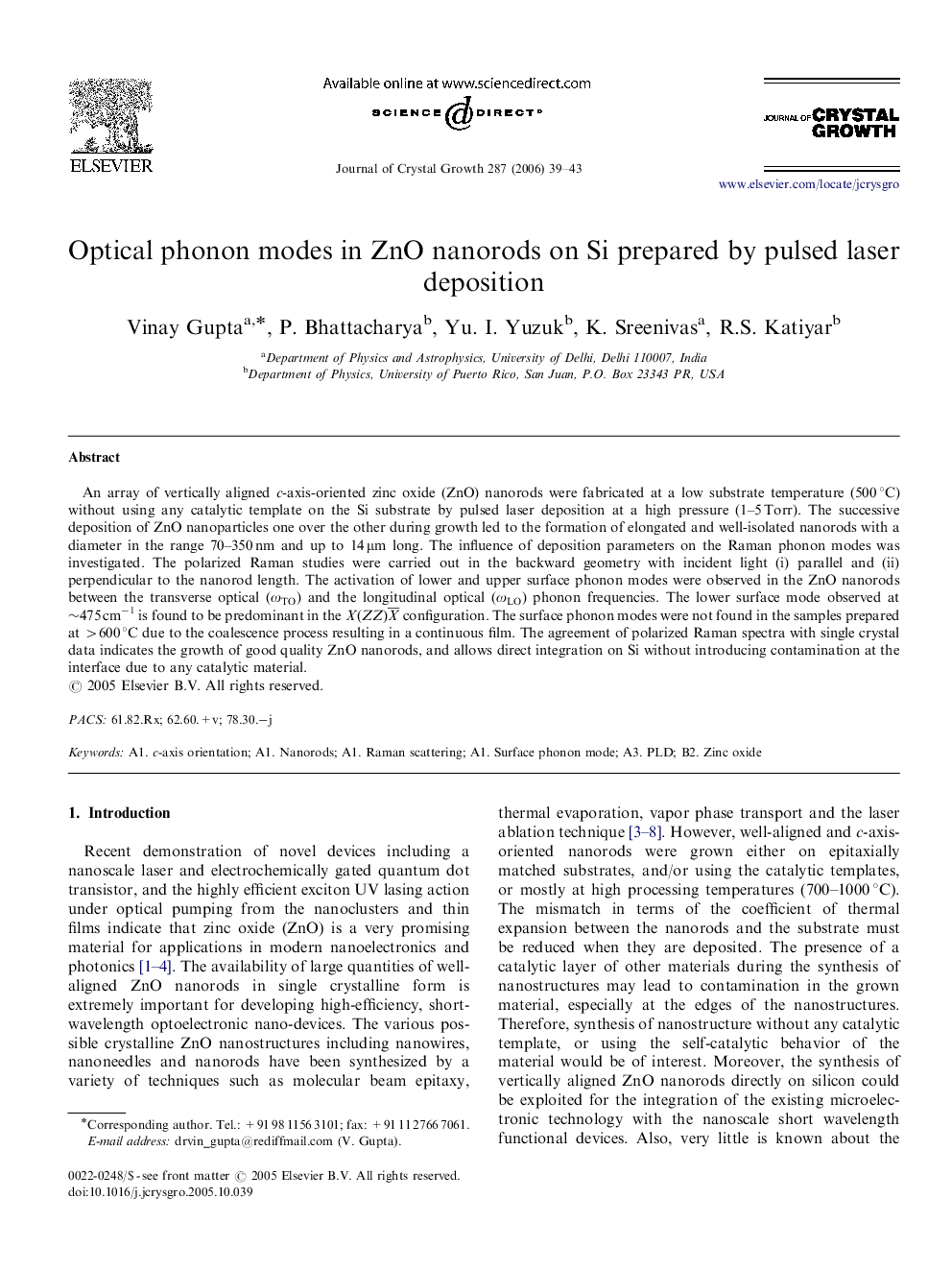| Article ID | Journal | Published Year | Pages | File Type |
|---|---|---|---|---|
| 1796827 | Journal of Crystal Growth | 2006 | 5 Pages |
An array of vertically aligned c-axis-oriented zinc oxide (ZnO) nanorods were fabricated at a low substrate temperature (500 °C) without using any catalytic template on the Si substrate by pulsed laser deposition at a high pressure (1–5 Torr). The successive deposition of ZnO nanoparticles one over the other during growth led to the formation of elongated and well-isolated nanorods with a diameter in the range 70–350 nm and up to 14 μm long. The influence of deposition parameters on the Raman phonon modes was investigated. The polarized Raman studies were carried out in the backward geometry with incident light (i) parallel and (ii) perpendicular to the nanorod length. The activation of lower and upper surface phonon modes were observed in the ZnO nanorods between the transverse optical (ωTOωTO) and the longitudinal optical (ωLOωLO) phonon frequencies. The lower surface mode observed at ∼475 cm−1 is found to be predominant in the X(ZZ)X¯ configuration. The surface phonon modes were not found in the samples prepared at >600 °C due to the coalescence process resulting in a continuous film. The agreement of polarized Raman spectra with single crystal data indicates the growth of good quality ZnO nanorods, and allows direct integration on Si without introducing contamination at the interface due to any catalytic material.
